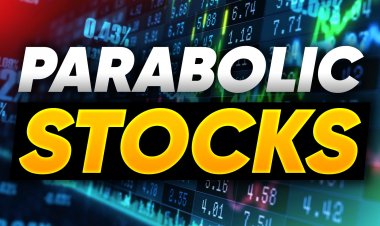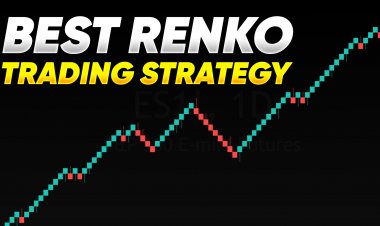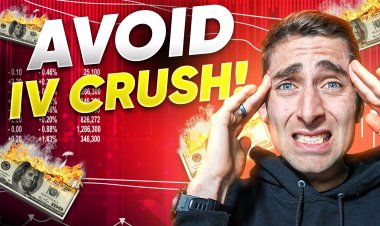What is Option Open Interest?
In the world of options trading, open interest is a measure of the total number of outstanding option contracts. In other words, it refers to how many contract have been traded in the past timeframe and are still open for trading. To calculate this figure, you would take the sum of all different types of options that have been opened during a given time period and divide by two. When you're looking at an option chain, it is the notional value in the far right column under "OI."

What is open interest?
In the stock market, Option open interest is the total number of available contracts that have been opened through buying or shorting. So when you're looking at an option chain, it is the notional value in the far right column under "OI."
What does open interest tell us?
Open interest reflects trader sentiment on the underlying stock and could provide insight into the future price action. For example, specific scenarios correlate with whether an asset will have rising or falling prices. This can give investors new trading opportunities.
What is options trading volume?
Option trading volume represents the number of contracts opened for a given stock on a particular day. This metric can be found in the "Volume" column on an options chain.
Example on TDAmeritrade
Here's an example on each column for the specified strike price on the popular broker TDAmeritrade. Throughout this article, we will detail what these numbers mean to you.
How volume and open interest are related
Option open interest and trading volume are two key metrics traders use when assessing how liquid a particular marketplace is for options contracts.
A high level of open option interest generally indicates a lot of demand for traded options contracts. In contrast, a high volume suggests significant buying and selling activity. When both metrics are high, it usually signals that the market is in equilibrium.
Many active positions of options contracts shorted will need to be repurchased. So seeing a high number of short posts could provide extra liquidity.
A trader should pay close attention to the current interest and volume when looking to enter or exit a trade in a given period, as they can provide clues as to where the market is heading. These two metrics could help identify trading opportunities every single day.
Result of liquidity
The best way to tell how liquid an option is to check the bid-ask spread. This is the difference between the buyers and the sellers. The more significant the difference, the less liquid, which means more money wasted getting in and out of the option. In the example below, Apple has a very tight bid-ask spread of less than 5%.
Options volume and open interest example
Looking at the options chain for Facebook (FB), we can see that the open interest is 405 contracts. The trading day volume is also high, with over 260 contracts. This suggests that there is a lot of demand for FB options and that the market is in equilibrium. An excellent volume to open interest ratio is typically 50%.
If you were looking to enter long positions in an options contract in FB before choosing an expiration date or strike price, you would want to see that options volume and opening transaction were high before evaluating the price trends.
Benefits of high options trading volume
High option daily trading volume means that there are increased option contracts traded, which can provide support or resistance levels for your particular contract and would be considered a bullish signal. If you're looking to open a long position in an asset with high options volume and open interest, this would be beneficial since there is demand for the product on both sides of the market (i.e., buyers and sellers).
What do low options trading volume and open interest indicate?
If you see low option open interest and trading volume, the options market for a particular asset is not very active, which could be a neutral signal. Low activity levels can indicate that traders are unsure about price movements and are nervous if they would be able to buy or sell at their desired price point.
The lack of liquidity on the option chain will make it very hard to enter an order large. This lack of liquidity will also cause the trader to pay a contract premium. So traders must be aware of these moments, and open interest decreases.
When selling underlying positions, the same problem will occur. So when exiting and entering the same option with low option volume and low open interest, the trader will lose money twice. This will compound the losses making it harder to become profitable on the active contracts.
Traders must be aware of us well it is possible to be profitable in these scenarios. There is little room for error.
Low option open interest example
Looking again at the FBK options chain, we see that the open interest is only at two contracts. The volume is also low, with 0 contracts for the trading day. This suggests that traders are not very interested in FBK options and that there may be a lack of liquidity in this market.
This can all be reflected in the bid-ask spread. The buyers are around $85, and the sellers around $440. So if the trader intended to get in the trade, they would most likely have to put their orders for option contracts around $300 to $400. And then when they went make a closing transaction on those same options, they would have to put their sell order around one to $200. This could result in a 50% loss in and out of the trade I'll because of the low open interest and volume. If the open interest increases significantly, this option will be safer to trade.
Benefits of high option open interest and volume
Open interest is an important metric to watch when trading options because it can indicate the market's liquidity level. When there's high open interest or an open interest increase, it means that there are many traders interested in buying or selling the option contract. This can lead to increased implied volatility and more opportunities for profits (or losses) same day.
As we discussed in the example with low open interest and volume, the trader is typically paying a premium for the contracts and selling them for a discount when trying to exit them. This could be an extra 10 to 30% lost just from entering and exiting at the potential price in terms of percentages.
The benefits to entering with high volume and high open interest mean greater liquidity, which means more percentage points added possible profit in the trade. This can significantly add up over time and make a massive difference for the trader long-term.
What is the minimum volume or open interest for options trading?
There is no set minimum open interest for options trading. However, exchanges may require a certain level of open interest to list an option contract. For example, the Chicago Board Options Exchange (CBOE) requires that at least 500 contracts must be traded on each day for an option to remain listed.
It is essential to have a daily trading volume and open interest of at least 10-50 times the amount of contracts a trader would be looking to buy. But the higher, the better because of the points listed previously.
What does it mean when open interest is higher than the volume traded?
When you see that open interest is higher than the volume traded, many traders still have to buy or short option contracts and may need to exit in the future. This offers the trader lots of liquidity, leading to less money lost buying and selling these options. It is imperative to target liquid option chains as traders can quickly lose 20 to 30% at the mid-market price when there is a lack of open interest and volume.
What do high volume and low open interest indicate?
High volume and low open interest usually mean a lack of liquidity in the market. This can lead to increased spreads and difficulty getting in or out of a trade at the desired price point.
These are pivotal moments where traders or large institutions are paying a premium to buy the options. When large orders come in the market with low open interest on the option chain, it could be a huge indication that smart money believes a large move is coming in the stock. That would be one of the reasons why they would pay premiums for options that have poor liquidity. They are basically paying an increased price now for the future potential because they believe something could happen.
Many websites, including BreadAlerts, track these large orders and low open interest metrics. Many traders will make it their mission to follow large money, especially through the large orders they leave behind when large money starts paying premiums for certain options that could be an indication of a possible trade opportunity and a shift in market sentiment, which could be a bearish or bullish opportunity if read correctly.
High volume versus open interest example
In the example below, you can see more contracts bought on Facebook than open interest options for the trading day. The amount of volume option was 4766, while the open interest was 1841. This is a multiple of over two.
This means that any new money market participants buying the option are paying a premium at this bid price because of the lack of buyers and sellers. This could also be an indication that there’s an anticipated price movement coming. Many traders will look at this particular call option with a bullish bias on Facebook.
The bottom line
In conclusion, it's important to watch both the volume and open interest when trading options. Traders should look at the option chain to identify which options have high volume and open interest. These are the ones that carry enough liquidity, making it easier for traders to get in or out of a particular contract without moving the price too much.
Many websites, including BreadAlerts, track this open interest data so that traders can take advantage of possible new positions and check the significant change in daily volume to make better-informed decisions when creating a new contract or managing a long open trade.
Trade with us!
Looking for a more sophisticated and educational options trading experience, look no further than "Market Moves Premium Options Trading Group." Our exclusive 7-day membership offers swing trading set-ups, fast text signals, and +100 hours of educational content. Plus, you'll have access to live trading sessions twice per day. So if you're ready to take your options trading to the next level, join us today!
Financial Disclaimer: Market Moves LLC is a company that provides education in financial and stock market literacy. WE ARE NOT FINANCIAL ADVISORS. In fact, it is illegal for us to provide any financial advice to you. Under U.S. law, the only persons who can give you financial advice are those who are licensed financial advisors through the SEC. Results shown from Market Moves LLC or customers who use our product and/or service are individual experiences, reflecting real-life experiences. These are individual results, and results do vary. Market Moves LLC does not claim that they are typical results that consumers will generally achieve. Past performance does not guarantee future results. You should not rely on any past performance as a guarantee of future investment performance












![Is Upwork A Good Buy? [HUGE MOVE AHEAD]](http://tradewithmarketmoves.com/uploads/images/2021/12/image_380x226_61c25a030e09f.jpg)






